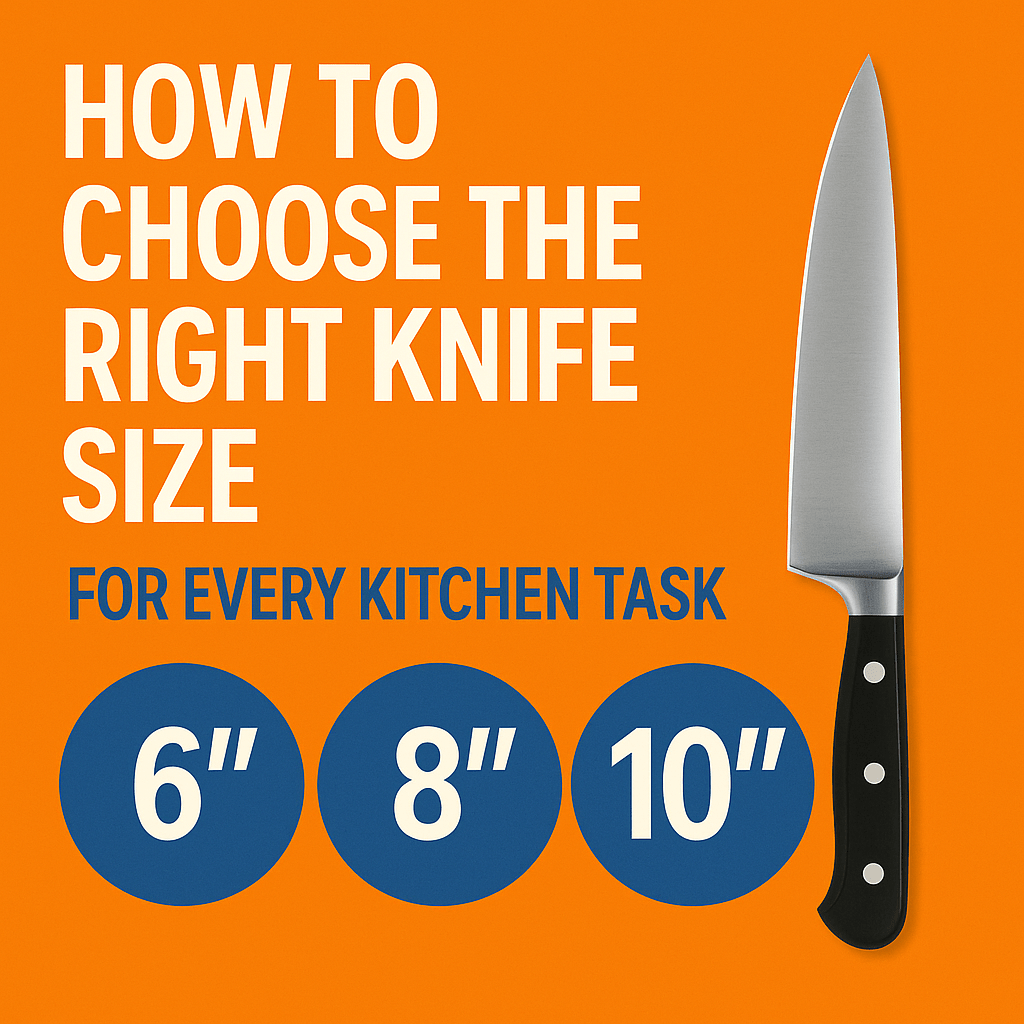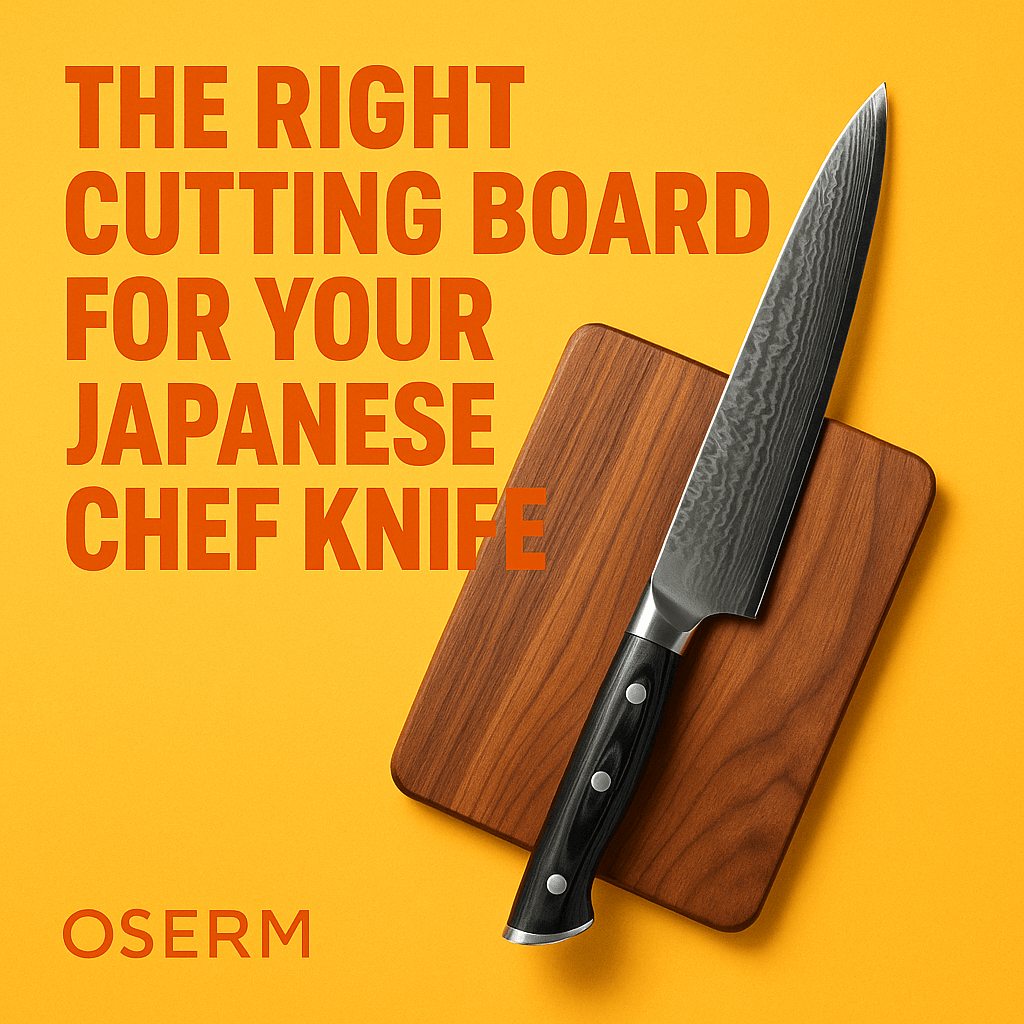
How to Choose the Right Knife Size for Every Kitchen Task
When it comes to cooking, the size of your kitchen knife can make all the difference. Whether you’re slicing vegetables, filleting fish, or carving a roast, using the right knife size will improve your precision, efficiency, and safety. At OSERM, we craft Japanese chef knives in different lengths so you can choose the perfect tool for every kitchen task. But how do you know which size is right for you?
In this guide, we’ll break down the most common knife sizes, explain their advantages, and help you select the perfect blade length for your cooking style.
🔍 Why Knife Size Matters
A kitchen knife’s size affects how it feels in your hand, how easily it moves through food, and even how safe it is to use. The wrong size can cause strain, limit control, and reduce cutting accuracy. The right size, on the other hand, feels like an extension of your hand, making every cut smooth and effortless.
- Precision: Smaller knives are better for detailed work like mincing herbs or peeling fruit.
- Power: Larger knives can handle heavy-duty tasks like breaking down poultry or chopping dense vegetables.
- Comfort: The right size matches your hand strength and cutting technique, reducing fatigue.
📏 Common Chef Knife Sizes
6-Inch Chef Knife – The Compact All-Rounder
The 6-inch chef knife is perfect for home cooks with smaller hands or limited counter space. It offers better maneuverability and is less intimidating for beginners. This size works well for everyday chopping, slicing, and dicing small to medium ingredients.
Best For: Small kitchens, beginners, precision cutting.
Pros: Easy to control, lightweight, versatile for smaller tasks.
Cons: Not as efficient for cutting large items or big batches.
8-Inch Chef Knife – The Professional Standard
The 8-inch chef knife is the most popular size among both home cooks and professional chefs. It’s the perfect balance between control and cutting power, capable of handling a wide range of kitchen tasks from mincing garlic to slicing roast beef.
Best For: All-purpose use, versatile cooking styles.
Pros: Ideal balance of size, weight, and performance.
Cons: Slightly heavier than smaller knives, may feel large for users with small hands.
10-Inch Chef Knife – The Power Performer
The 10-inch chef knife is designed for large-scale cutting tasks. It covers more surface area with each stroke, making it ideal for big vegetables like squash, large cuts of meat, or batch cooking.
Best For: Large kitchens, frequent meal prep, professional chefs.
Pros: Cuts large items faster, great for heavy-duty work.
Cons: Heavier, requires more skill to control safely.
🍞 Specialty Knife Sizes
Aside from chef knives, many kitchen tasks benefit from specialty knife sizes:
- 3-4 Inch Paring Knife: Ideal for peeling, trimming, and intricate cutting work.
- 7 Inch Santoku Knife: Shorter than a chef knife but with a flat edge, perfect for quick chopping.
- 9-12 Inch Carving Knife: Long and thin for slicing cooked meats with precision.
- 6-8 Inch Utility Knife: Versatile for mid-sized tasks between paring and chef knife jobs.
🖐 How to Choose the Right Knife Size for You
- Hand Size & Strength: Smaller hands often find 6-8 inch knives more comfortable, while larger hands can handle longer blades.
- Cooking Style: If you prep large meals, opt for a longer blade. For quick, small dishes, shorter knives are better.
- Kitchen Space: Smaller kitchens benefit from shorter knives that are easier to maneuver.
- Experience Level: Beginners may feel more confident starting with a 6 or 8-inch blade before moving to larger sizes.
💡 OSERM Pro Tip
For most home cooks, an 8-inch OSERM Japanese chef knife offers the perfect balance of versatility, control, and cutting power. Add a 6-inch utility knife and a 3-inch paring knife, and you’ll be ready for almost anything.
🧽 Knife Size and Maintenance
No matter what size you choose, proper maintenance is key to performance:
- Store knives in a block or magnetic strip to protect the edge.
- Use a proper cutting board to prevent blade damage.
- Hone regularly and sharpen as needed to maintain a razor edge.
Tags: kitchen knife sizes, chef knife length, best knife for home cooking, OSERM chef knife, knife buying guide






